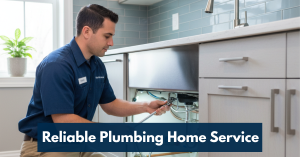If you’re looking into how to install an EV charger at home in Hollywood, you’re already thinking ahead. With an electric vehicle, having a reliable charger at home means no more last-minute charging at public stations. It’s convenient, cost-effective, and ultimately gives you control over where and when you power up. But to do it right, you need a solid plan because mistakes now could cost you — in time, money, or safety.
That’s why this guide walks you through everything: assessing your home’s setup, choosing the best charger, dealing with permits, and installing it correctly. And when you want it done professionally, Whitney Services is the local team you can trust. We specialize in EV charger installation in Hollywood and know exactly what it takes to get it right.
Key Takeaways
- Installing a home EV charger brings long-term convenience, cost savings, and independence from public charging stations.
- A successful installation depends on assessing your home’s electrical capacity, selecting the right charger, navigating permits, and hiring licensed professionals.
- Avoid common pitfalls like overloading your panel, ignoring local regulations, or skimping on wiring.
- Whitney Services provides expert electrical services in Hollywood to handle everything, from load calculations to wiring to inspection.
Understanding Your Home’s Electrical Needs
Before buying any equipment, you need to understand whether your home is ready for an EV charger install. This starts with checking your electrical panel capacity and figuring out if you have enough space and amperage for a charger.
Most home EV chargers are either Level 1 (120V) or Level 2 (240V). A Level 1 charger is easy to plug in but very slow. A Level 2 charger is faster, more powerful, and ideal for regular at-home charging. But it draws a lot more current, typically 30–50 amps and needs a dedicated circuit.
To figure out if your panel can handle that extra load, a licensed electrician should perform a load calculation. This calculation takes into account your home’s existing electricity use (from appliances, HVAC, lighting, and more) plus the addition of the EV charger. Since EV chargers are considered continuous loads, the electrician will size the breaker and wire accordingly.
If your main panel is older, say 100 amps, or if it’s already nearly full, you might need an electrical panel upgrade. On the other hand, newer homes with 200-amp service often have more than enough headroom for adding a charger. But even then, you need to make sure there are free breaker slots. If not, you may need a sub-panel or to reorganize your existing panel.
Choosing the Right EV Charger
Once you know your home’s capacity, you can choose a charger that fits both your vehicle and your home. Here are key factors to think about:
Charger certification and safety
Make sure the charger is UL-listed (or equivalent) and built to withstand outdoor weather if you plan to mount it outside.
Amps and power output
Level 2 chargers often support 32A, 40A, or more. Pick one that matches what your home can safely provide.
Cable length and reach
Measure the distance from where the charger will be mounted to where your car plugs in so you don’t end up with too-short or dangerously stretched cables.
Smart features
Do you want scheduling, remote control, or power monitoring? Smart chargers can help you take advantage of off-peak electricity rates.
Connector type
Most EVs in North America use the standard J1772 connector. Make sure your charger is compatible or has an adapter if needed.
Future-proofing
Even if you have only one EV now, plan for the possibility of a second. That might influence where you mount the charger, how you run conduit, or how big your breaker should be.
By doing this homework, you’ll avoid the mistake of picking a cheaper or ill-fitting charger that doesn’t meet your long-term needs.
Permitting, Safety, and Installation Process
Installing a home EV charger isn’t just about mounting a box on a wall. It involves electrical work, safety standards, and sometimes local permits.
Hire a Licensed Electrician
Work with a professional who knows local codes. They’ll perform the load calculation, design the circuit, choose the correct wire and breaker size, and make sure everything is safe.
Obtain Permits
Many cities require permits for installations involving a 240V circuit. The electrician or contractor can help you apply for the right permit and submit a wiring plan. Once the work is done, an inspection ensures everything is up to code.
Run Wiring and Mount the Charger
After permits are approved, the electrician installs the conduit and wiring from the panel to the location where you want to mount the charger. They’ll install a dedicated double-pole breaker and the properly sized wire. The charger unit is then mounted securely.
Test and Commission
Once all the wiring is in place, the electrician will power up the circuit, connect the charger, and test everything. They’ll check that the breaker is sized correctly, the charger powers on, and if you have a smart charger, that its connectivity features work.
Final Inspection
After installation, a municipal inspector may come by to verify that everything meets code and is safe. When you get the inspection sign-off, you’re ready to start charging.
Avoiding Common Mistakes
Even with planning, people can still make missteps. Here are frequent pitfalls and how to avoid them:
Underestimating Panel Capacity
Not doing a load calculation is risky. If your panel is already working near its limit, adding a charger can overload it.
Poor Charger Placement
If you choose a bad location, the cable may not reach your car, or you may end up with a messy installation. Plan carefully.
Skipping Permits
That might save money in the short term, but it can lead to safety issues or problems if you ever sell your home.
Hiring the Wrong Technician
Using someone who is not licensed or not familiar with EV charger installations can lead to code violations, unsafe wiring, or long-term reliability issues.
Ignoring Future Needs
If you don’t think ahead, adding another EV later could mean more work and more cost. It’s smart to plan now.
Why Choose Whitney Services
When you want a seamless, mistake-free EV charger installation in Hollywood, Whitney Services is the team to call. Here’s what sets us apart:
Local Expertise
Whitney Services specializes in electrical services in Hollywood. Our experience with the area’s building codes, permitting nuances, and common wiring layouts means fewer surprises during installation.
Licensed Professionals
Our electricians are fully licensed, skilled in load calculations, panel upgrades, conduit work, and safe installations. You can trust us to follow the strictest safety standards.
Full-Service Installation
They handle everything, from conducting initial assessments and securing permits to running wiring, installing the charger, and coordinating inspections.
Customer-Centered Approach
The team at Whitney Services treats your home with care. We explain each step, answer your questions, and clean up after themselves. You’ll have self-assurance at every turn.
Future-Proof Planning
Whitney Services helps you plan not just for your current EV but for potential future needs, whether that means another EV, a higher-power charger, or other upgrades to your electrical system.
Conclusion
Putting in a home EV charger is one of the smartest investments you can make when you own an electric vehicle. By approaching the project with care, assessing your home’s electrical capacity, choosing the right charger, going through the proper permitting process, and hiring skilled electricians, you set yourself up for a safe and efficient install.
And when you’re ready to take the next step, contact Whitney Services. Their experience with EV charger installation in Hollywood ensures your project is done right the first time, without surprises or regret. With their help, you’ll be able to plug in every night with ease, knowing your system is solid, safe, and ready for the future.
Frequently Asked Questions
Costs can vary widely. On average, installation (excluding the charger itself) might cost around $800 to $3,000 depending on how complex the wiring is, whether you need a panel upgrade, and local fees. If your panel needs a full upgrade, costs could be higher.
Yes, for a proper Level 2 charger. EV chargers draw high current, so using a dedicated circuit ensures safety and reliable performance.
It’s not recommended. Permits and inspections help guarantee that the installation meets electrical code and doesn’t create safety risks. Skipping them could create liability issues or void your home insurance.
If your panel is full, you may need a sub-panel or a panel reconfiguration. Whitney Services can evaluate your setup and recommend what’s best for your home.
If everything is straightforward — no panel upgrade required — the actual installation might take a day. But if upgrades are needed, it could take several days from planning through inspection.







